* (restored)
Since the 60s there has been a ton of scholarly research on magic and the history of magic. Pioneered by people like Francis Yates, there have also been in and out of the margins public ‘practitioners’ that despite all efforts continue to profess the reality of certain techniques of ‘action at a distance.’ Some of the names below may be familiar; some less so. The survival of this material in the public consciousness is strange. Part of it has to do with the way books work. And that’s all of course changing radically right now.
The grimoire, or magical textbook, has a long and spurious history that sits in several places, often contradictory in nature: the most immediately relevant is it’s relationship to reality and fantasy. Magic books have lived most of their lives in the imagination – most grimoires were limited in distribution and secreted for various reasons in hand-written manuscript form. Their movements and reality were shrouded in rumor and secrecy. This secrecy became part of the grimoire’s reputation and it’s hidden and rare status contributed to it’s notoriety. This often dramatic reputation was immediately seized on in the advent of mass publication, and the occult book of arcane knowledge became a singular protagonist in most genre fiction and popular cultural forms. For fun I’ve sprinkled this survey with my favorite examples in recent film and television. The smattering of clips is a fraction of the material and could make a post all it’s own.
Giles the Watcher on Books vs. the Internet from Buffy the Vampire Slayer
As the internet absorbs printed text, a universe of books is being redistributed, pulped and fetishized. Nowhere is this more clear than in the bibliophile/scholar/geek culture for occult books. Certain choice used book stores are flooded with vintage books from the 60s and 70s new age, and small-run presses are fueling a renaissance of translation, scholarship and publication of magic texts that have languished for centuries in libraries all over the world. As someone who has been watching and participating in this culture for a while it seems to be a great moment to share a small list of available works and to meditate on the present moment’s import for the book and the book of magic.
Evil Dead II
The specific quality of this list helps underline the triple reality these books present at the moment. First, no matter how you break it down, these books are arcane. It is one thing to read about occult books as narrative devices in thrillers and weird fiction (which is awesome). It is entirely different to read the books themselves and chance the bleed of fantasy into reality. A close reading of any grimoire is Lovecraft x10. Sanity points will leech away from you and chapel perilous, once looming safely in the distance, will be just over the next hill. That’s the cautionary tale in every book/film/story about infernal books… Secondly, although arcane, all of these books are in print, available right now on Amazon. In fairness, to keep to that qualification necessitated some omissions I’m sad about, and in one or two instances I chose versions of the texts that are in fact out of print (this is after all a collector’s fetish realm). But thirdly, all of these texts are available online in one form or another. You won’t get the commentaries and the awesome footnotes detailing library chases for manuscript copies that were compared, and in many instances the online versions available suck, but the texts are all out there.
Enough people over the years have asked me ‘what books to get’ on this subject and while I in no way claim any expertise on the subject beyond blind bibliomanical enthusiasm, I don’t think I’m steering anyone wrong with the list of ten texts below and mentioning the most active presses and scholars I’ve come across in my travels.
***
The Devil Rides Out
Magic texts are as old as the written word (actually older). The form is almost unique in it’s persistence: from the oral tradition, into the time of hand written manuscripts, through early printing, into mass publication and now witnessing the transition to electronic text. Given this lineage it’s not surprising much of it feels like poetry, the only other form to ride all of these waves. It’s also no surprise that some of these texts have extremely bad reputations. The fluid social/political/philosophical space these books inhabit by definition makes them a threat to the status quo.
Magical texts are always in motion and eternally up for grabs. They suggest totalizing systems without ever accomplishing that totality. All I can say is that this seems to be the point. Every text I’ve looked at has and seems to encourage differences and discrepancies. As more and more manuscript research is done, part of the confusion seems to be from transcription errors and other typical forms of errata, but some of these foibles seem willful. The mistruths in these texts, it is often said, are to separate the worthy from the unworthy. It is well known that some works were written with multiple interpretations in mind, but there’s evidence some of them have multiple systemic interpretations or different codes to interpret the symbols by. Many of the societies formed around these texts, secret and otherwise, have graded progressions or levels, and symbol sets get completely different meanings depending on the reader’s grade or level. Where you are as a reader has a place that is rarely given importance in other kinds of text. Many magical texts can feel completely different on subsequent readings and will open up the more you work with them and the topics they cover. In that sense alone these texts have a palpable effect on reality. I can attest to this personally.
In the Mouth of Madness
Looking at these books historically it is also stunning and heartening how truly multi-cultural and inclusive the works are. Magic seems ultimately to be about synthesis, and looking historically, the magical tradition seems to have the most purchase and power where cultures meet and interact. I have been continually shocked to find every continent’s thought structures at play in one place or another. What is termed the ‘western’ esoteric tradition has back-currents from and to Africa, Asia and even the Americas. Several European grimoires have entered into African and Caribbean magic traditions, usually as representations of ultimate taboo. John Dee’s famous black mirror came from America and is rumored to have belonged to an Aztec priest…
The List of Texts
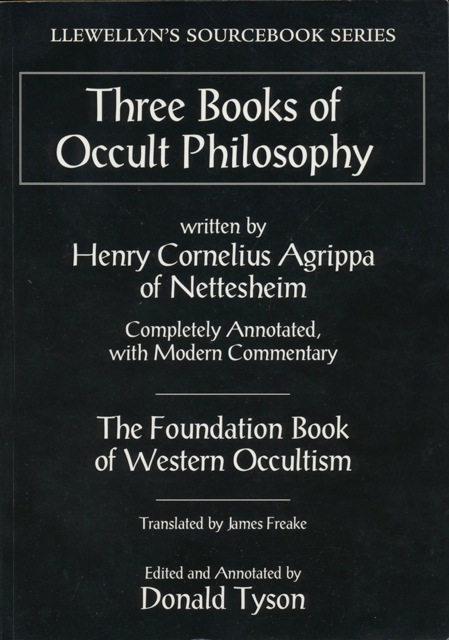
• Three Books of Occult Philosophy, Henry Cornelius Agrippa
Probably the most referred to of all of the grimoires, this book is a true encyclopedia of magical thought as it was beginning to shear away from accepted knowledge in the renaissance. Erudite in the high, Agrippa fluidly quotes between the Bible and the Christian apocrypha, The Jewish and hebraic occult traditions as well as the entire hellenic record. Chaldean and Islamic astrology have a prominent place, as well as most of the european folk remedies and cures. It was this later data that really marked the book for infamy: the perceived threat of witches and Ottoman expansion of the time made these materials ‘infernal’ in the eyes of his peers. Given all of the material covered and quoted, Donald Tyson’s fully annotated edition pictured here adds a value to the text that can’t be under estimated.
Online: http://www.esotericarchives.com/agrippa/
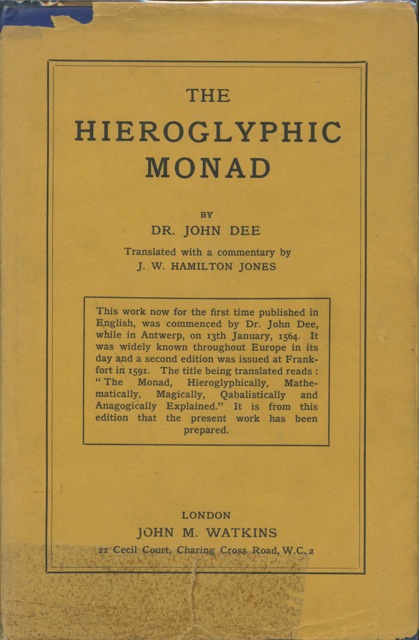
• The Hieroglyphic Monad, John Dee
Second only to Aleister Crowley here in the English speaking world, John Dee is synonymous with magic and witchcraft. He’s gone through a significant makeover, being most recently the subject of an opera written by Blur/Gorillas architect Damon Albarn. The Monad is Dee’s first and most accessible magical text, written in a form mimicking Euclid’s Geometry which Dee had translated into English around the same time. With all the indicators of what was to come in what is now called Enochian magic, this text is shorter, clearer and much simpler than any of the Enochian texts, which are all dazzling in their own right. The Monad is a great introduction to the occult tradition and a great multiple-read text.
Online: http://www.esotericarchives.com/dee/monad.htm
A full documentary on Dee I hesitate to post for it’s length (and slight bombast) but I’ve already posted Evil Dead bits and the soundtrack is all Coil!
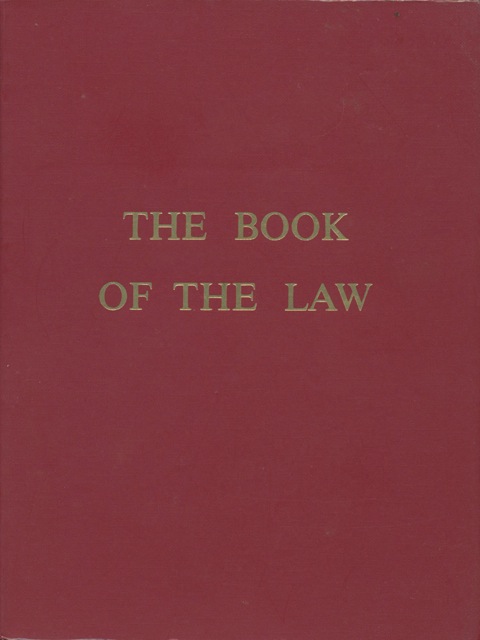
• Aleister Crowley, The Book of the Law: Liber Al Vel Legis
If the Hieroglyphic Monad is short and clear, the Book of the Law is short and utterly opaque. Dictated from a revelation/possession experience in 1904 in Egypt, this text is the foundation of the Thelema tradition, the contemporary bridge between the historical traditions and the contemporary traditions that exist today. Firmly rooted in the ideas of the Corpus Hermeticum as well as the east-meets-west confluences and conflations that are really what the occult tradition is all about, the text has everything Crowley has to offer at his most lovable and obnoxious. An automatic poem with a sharp and tangled point, it even ends with the warning that the book should be destroyed after being read. Several annotated versions of the text, all titled The Law is for All are available, each surrounded by controversy. I am partial to the commentaries of Crowley’s secretary Israel Regardie, an accomplished occult philosopher in his own right. The Book of the Law’s importance as a magical text is argued intensely, but no one denies Crowley’s importance in transmitting the fire and enthusiasm for magic that has burned steadily in the popular consciousness ever since.
Book: http://www.amazon.com/Book-Law-Aleister-Crowley/dp/0877283346
Online: http://www.sacred-texts.com/oto/engccxx.htm
Video: 9th Gate (Fargus’s collection)
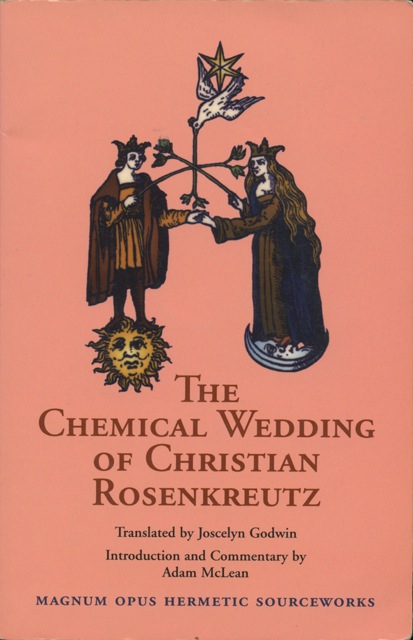
• The Chemical Wedding of Christian Rosenkreutz
While not strictly a magical text, this allegorical story is a great ‘gateway’ into the mindset necessary to process a lot of the thinking found in magical texts. Surrealism as we know it today was heavily influenced by this text and the history that grew out of the alchemical and Rosicrucian traditions, of which The Chemical Wedding is considered the masterpiece. The merging of the symbolic, poetic and descriptive modes of writing makes for a dreamy, delusional and above all magical feeling that se
ems to be suggesting something above and beyond the simple ‘reading’ of the text. Indeed, the symbolism and structure of the text has been studied and interpreted rigorously since the work appearance in 1616.
Online: http://www.levity.com/alchemy/chymwed1.html
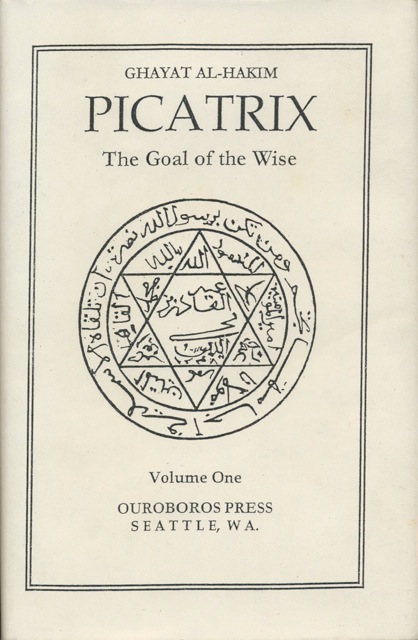
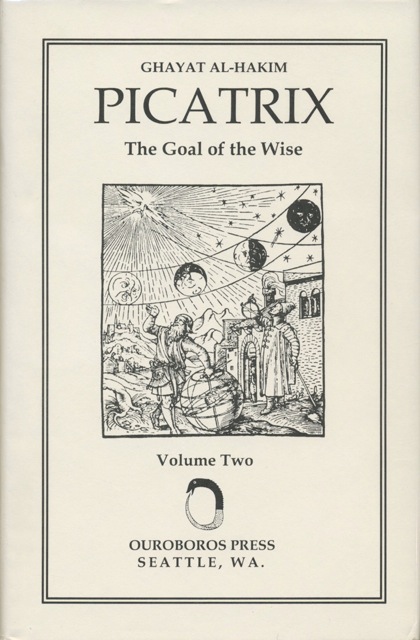
• Picatrix: Ghayat Al-Hakim, Volumes I and II
Of the books coming from the orient to renaissance Italy, this tome seems to be architectonic for many of the magical threads we can find today. An arabic text made up of several smaller works discussing the making of talismans, the lunar calendar and its magical properties, it clearly influenced all of the renaissance magicians and was at that time considered among the most infernal texts. It is also an excellent example of how much cross-cultural influence these traditions have, clearly demonstrating the large part the Islamic world had in preserving the knowledge of antiquity. Only recently translated into English, there are now several versions available.
Book (this is a different translation from the one above but is well rated and contains both volumes): http://www.amazon.com/Complete-Picatrix-Classic-Astrological-Atratus/dp/1257767852/ref=sr_1_1?ie=UTF8&qid;=1328905994&sr;=8-1
Online (this is a summary and not the full text): http://www.esotericarchives.com/picatrix.htm
Video: 9th Gate (book making: the devil is in the details)

• Sefer Yetzirah: The Book of Creation
The core text of Jewish mysticism, the correlation of alphabetic letter, number and the cosmos is here so elegant and systematic it is no wonder why Hebrew became the de-facto magical alphabet of choice. Most of the so-called angelic scripts are either ciphers of Hebrew or obviously derived from the letter system. Gemmatria, kabbalah, talismanic manipulation and many kinds of evocation and invocation owe their being to this text. Short and clear in it’s presentation, it is said this text existed orally for hundreds of years before it was written down in the early middle ages. Kaplan’s annotated version includes multiple translations and an in depth commentary that gives insight and clarity, whatever your familiarity with hebrew.
Online: http://www.sacred-texts.com/jud/yetzirah.htm
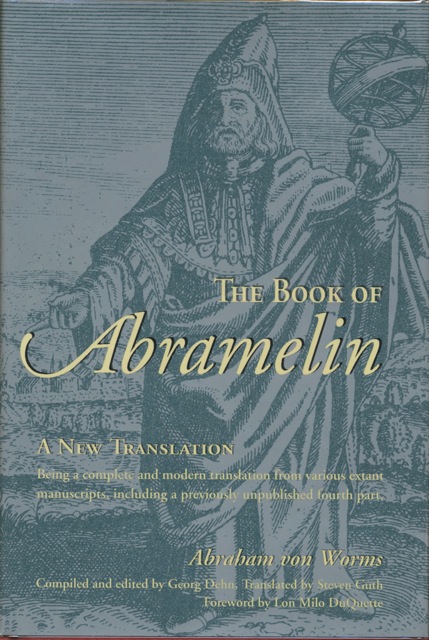
• The Book of Abramelin, Abraham von Worms
A degraded manuscript version of this text was a source document many of the Hermetic Order of the Golden Dawn’s rituals were based on. The current translation is the result of almost 20 years of research and it opens up the text and clarifies many of the operations and procedures. Most importantly, the Book of Abramelin contains the blueprint of the HGA ritual (Holy Guardian Angel), an extremely involved ritual practice that really sets the bar for what kind of dedication a magical practice can require. The links to what we now know of the tantric, yogic and other eastern psycho/physical practices are amazing.
Book: http://www.amazon.com/Book-Abramelin-New-Translation/dp/089254127X/ref=sr_1_1
Online (This is an older translation): http://www.sacred-texts.com/grim/abr/index.htm
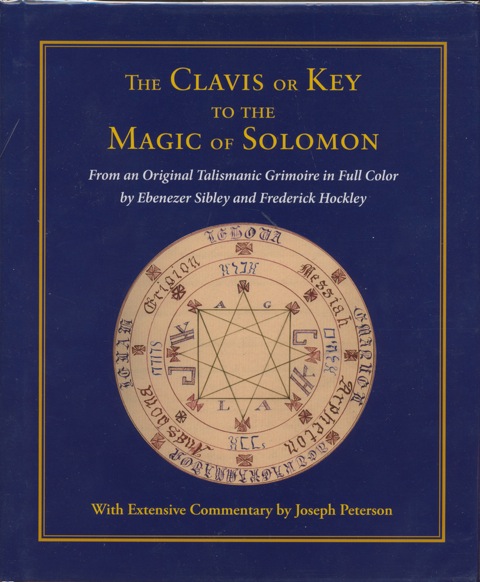
• The Clavis or Key to the Magic of Solomon
A great new trend in contemporary magical publications has been facsimile editions of the more referred to manuscripts. Some of the most famous of these were penned by the victorian occultist Frederick Hockley. Most interested in scrying, Hockley a
lso copied occult manuscripts for his extensive library, a self-admitted bibliophile. The meticulous artistry exhibited in these documents transmits part of the pleasure of books and hand-made books in particular. This is a particularly interesting text to facsimile because of the number of variations of the Clavis or Keys that exist. The recent scholarship on these manuscripts is obsessive, detail oriented and wonderful to follow. Sifting between versions of talisman recipes underlines the personal, esoteric and process-oriented nature of these practices.
Solomonic grimoires show the intricacies and difficulty of dating and locating the origins of most Grimoires. Hundreds of manuscripts claiming the bible’s King Solomon as the author exist. None have proven to be nearly that old. The content of the texts is on one hand remarkably similar and on another intensely culturally specific, and examples of Solomonic grimoires have been found written in almost every language. The works definitely merit their own sub-category, but because of the way many of these texts were grouped together with other works the categories are fairly porous (see 9 and 10). The literature surrounding King Solomon (including the Bible) gives him great power as a controller of spirits (many were said to be marshaled in the construction of the first temple). This relationship between power and control of the spirit realm led to many stories up to the 19th century of powerful lords and their architects using ‘infernal labor‘ in their construction projects, particularly bridges.
Book (expensive, but it is an extensively annotated facsimile edition of a beautiful hand-rendered text): http://www.amazon.com/Clavis-Key-Magic-Solomon-Talismanic/dp/0892541598/ref=sr_1_1?s=books&ie;=UTF8&qid;=1328906684&sr;=1-1
Online (this is a completely different version, based on the same family of manuscripts but producing a very different text, and no pretty handwriting): http://www.sacred-texts.com/grim/kos/index.htm

From deGivry’s survey Magic Witchcraft and Alchemy

From deGivry’s survey Magic Witchcraft and Alchemy
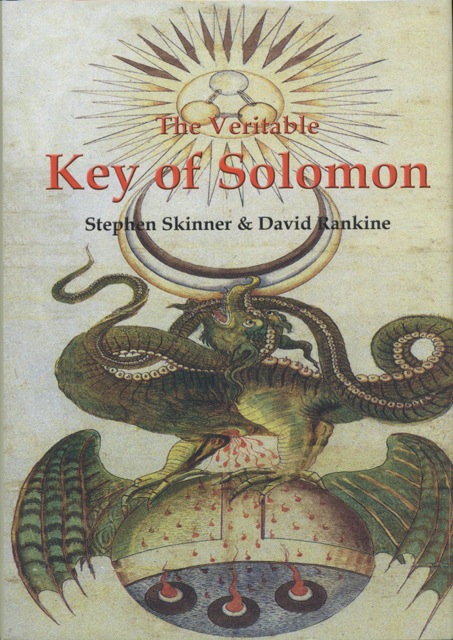
• The Veritable Key of Solomon
In 1889 S. L. MacGregor Mathers, one of the founders of the Hermetic Order of the Golden Dawn, published a text called the Key of Solomon, ostensibly starting the entire field of research/enthusiasm for what are now termed the Solomonic grimoires. There are hundreds of them and the divisions separating them can be minute and immense. While Peterson’s facsimile of Hockley’s manuscript gives a singular focus to the Solomonic tradition, Skinner and Rankine’s compendium of Keys (there are three separate tracts in this text) seeks to orient the reader to the different clusters of documents that have been translated and published over the years and given the Solomonic modifier. The research shows just how inter-penetrating and intermixed these manuscripts had become over several hundred years of clandestine transmission. Clear in the confusion, the reader gets a sense of some of the materials Agrippa, Dee and our other protagonists had access to in their researches. The book comes from the Sourceworks of Ceremonial Magic series, now numbering eight volumes, all of which of the highest quality and detail.
Online (One version from a specific manuscript, different from the ones referred to in the book, but comparable): http://www.esotericarchives.com/solomon/sl3847.htm
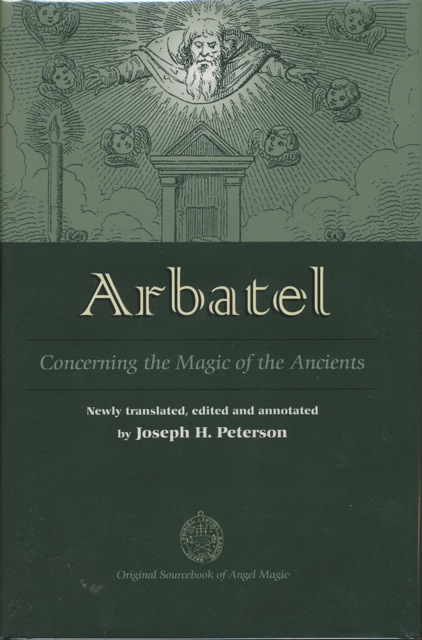
• The Arbatel of Magic
The Arbatel represents a renaissance streamlining of many of the threads of the occult tradition being formed and reevaluated. Insisting on an ‘olympian’ character of the planetary influences, the system described feels both pagan and judaeo-christian in it’s origins and makes for a somewhat unique and syncretic voice in the literature. Also of note is that unlike most texts, which claim an almost always apocryphal antiquity, this text was first printed in 1536 and seems to have been written at that time. Whereas Agrippa’s text is clear in his sources to the point of confusion (without a commentary I think most readers will be lost), the Arbetel is almost simple in it’s presentation. This gives it a somewhat privileged place in the lore, as it is an extremely ‘user friendly’ text. Peterson’s modernized translation makes it more so and the edition available is elegant and erudite. It also smells delicious.
Online: http://www.esotericarchives.com/solomon/arbatel.htm
Notes
The three sections below are gravy for people who want more information. I also wanted to specifically mention these small presses as I think they are quite amazing, some making books that are art quality objects. While I don’t totally agree with Giles’s sentiments stated in the opening clip of this post I do feel that there is an experience in books that is unique, that books should share our thinking space with these new technologies rather than be replaced by them.
Presses
The Golden Hoard Press (Sourceworks of Ceremonial Magic)
Magnum Opus Books/Alchemy Web Bookshop
Scholars/Translators
Additional Reference Texts
* I could list hundreds of books here but have chosen the ones I’ve found myself needing to refer to the most. Tyson’s edition of Agrippa can make up for most of the gaps, but if you find yourself getting comparative in your analyses and want primary data, these books have helped a ton. I’m not including any eastern or hellenic source works, although Ovid and the Upanishads etc… of course are relevant…
777
Aleister Crowley’s collection and correlation of tables. These get a little funky the further you get into the material record and begin comparing the data, but it is a notable and fairly reliable (and precedent setting) collection of the tabulations and correlations of thousands of years of magical data.
The Complete Magician’s Tables
Stephen Skinner’s answer to the missing facts and errata that have surfaced since 777‘s publication. Much more useful and accurate ultimately than 777, it is reverent to and respectful of the document it owes fealty to.
The Torah
Commentated and scrutinized in a completely different manner, the book of course gives insight to many of the specifically Hebraic structures that appear in much of this material.
The Bible
One way or another you will come back here. As something to react for or against (‘I keep the Bible in a pool of blood so that none of it’s lies can affect me’ is a good Slayer quote for the moment), the Bible is there looming in the background of most of this material. Over the years I’ve come to appreciate much of the text, and realize that like all infernal books it’s what you do with it that counts.
The Qur’an
Much more of the occult tradition is built on concepts in this book that most would at first think and it is pretty embarrassing how ignorant we are in (America at least) of what is in this book…
The Nag Hammadi Scriptures
For those leery of the ‘good books’ mentioned above (like me), the Nag Hammadi scriptures can ease some of the frustrations the Torah/Bible/Qur’an as a reference can cause. These texts also open up a universe of religious and mystical thought that was virtually unknown to the modern world prior to their discovery in the 40s. Much more mystical and concerned with the individual than made it into the good books, and you can see a pattern of control that got exercised by excluding many of these thought bombs…
The Corpus Hermeticum
This collection’s influence on magical texts cannot be underestimated. It also links many of the other occult traditions, especially alchemy. Presumed to be of deep Egyptian antiquity for centuries, it is actually 2nd century, close in age to the Nag Hammadi codices and sharing many of their ideas.
—-
*
p.s. Hey. ** NLK, Hey. I posted yesterday before your comment registered, but I managed to spot it. My pleasure, obviously, on expressing the pleasure your videos gave me. 16mm, cool, wow. I love that look. Are you adjusting your ideas in any way to match that format, or … ? My French is poor. I understand okay, basically, without getting nuances and subtleties, but I don’t speak the language, and I can only really read factual stuff in French, although I do go to see French films without subtitles a fair amount. Right now I’m in a rare in-between reading phase, meaning no fiction or poetry at this very moment. A book about the history of Grove Press, a book about the history of two art galleries: Pat Hearn and American Fine Art. What are you reading? Tips? I do love Bresson’s color films the most. I’m in that camp. I hope you’ll get a chance to see them, although I suppose you’ll probably have to end up streaming them or springing for the DVDs. Anyway, have a swell Wednesday. ** David Ehrenstein, Things were tough for the detectably gay back then. P.J. Castellaneta is apparently working on a new film. Zac’s and my producer might be its producer. Everyone, Mr. Ehrenstein’s FaBlog sinks its inimitable claws into the Trump beast. Check it. ** Sypha, Understood. Well, that ‘cut your losses’ strategy it works for you, obviously. I don’t think it would for me. For instance, with ‘The Sluts’, I started and abandoned that novel many times over a 10 year period before I finally figured out how to make it work. So I would have lost my ‘hit’. Wow, that’s so cool to see the list of the ‘Guide’ songs. I, of course, had forgotten which I’d chosen since I haven’t looked at the novel in forever. I wasn’t able to get Zac on the phone yesterday, but I’m spending the day with him, partly at his place, so I’ll find that lyric and identify it and give you the source, probably in the Comments later today. Thanks, James. I’m super stoked and grateful that you’re doing that. ** Steve Erickson, Hi. Oh, yes, I do think I remember you mentioning the Buttigieg essay a while ago. I agree with you about Peck’s essay and what it means. The negative on it has gone too far in some instances, for sure, but then, on the other hand, I’ve seen people, even people I otherwise respect, hailing Peck as the gay hero of this generation and using the hashtag #DalePeck2020. That’s just as depressing to me. What a horrible fucking moment we’re in. ** Bill, Ha ha, I’ll get to work on the screenplay ASAP. Cheerleading from Paris on your war with software. How was ‘Midsommar’? ** _Black_Acrylic, Some of those who prize Verhoeven’s films say ‘Flesh+Blood’ is an unsung masterpiece or something. Interesting about the Frank Sidebottom doc. Man, he’s getting sung in ways he probably couldn’t have imagined, no? ** KK, Hi, man. Thanks for the ‘Crawl’ report. That’s good enough for me. I was just wondering how the title would be translated for the French version so I won’t miss it only to discover that ‘Crawl’ is the French word too. How odd. Oh, cool, thanks, I’ll order Matt’s book straight away, assuming they’ll ship to France. Wait, I just saw your late comment. Well, I mean, if he doesn’t mind sending me a copy, that would be fantastic. Uh, I don’t want to put my street address here, but you can email me at denniscooper72@outlook.com, and I’ll shoot the address back to you, if that works. Please tell Matt thanks very much from me. Enjoy the acing and arranging and finessing of your collection, which I know you will. The shopping phase is always purgatory, but at least it can be a quickie, fingers crossed. Early very happy birthday to you! And your celebration plans are killer and envy-provoking. Wednesday looks busy on my end, which is good, and possibly a bit too hot, sky-wise, but I suppose you know what that’s like being where you are. Anyway, I hope you make yours count or vice versa. ** Misanthrope, George, I have a very strong intuition that there is no genius to be missed. Oops, about the semi-shared endings. But, hey, yours could easily make his seem like a mere preliminary sketch. Big up on LPS landing employment. And big hope that he settles in there and works his ass off. ** Okay. Today I restore a post made for the blog some years ago by the excellent visual artist and expert occultist Jesse Bransford. He knows his shit, so, if the post is up your alley, let it steer you right. See you tomorrow.





 Now available in North America
Now available in North America 
@ Sypha, Hey. The Silverchair song (ref. on p. 168) is ‘Tomorrow’. As is the case with all the Silverchair and Blur lyrics in Guide, I altered them a little. But that’s the song. xo
Hey Dennis Here you are on the Most Magical Book of The All!
And here’s Stephen Colbert on Trump
Ah, I’ve read a few of these books in the past, during my occult phase. Well, certainly the Crowley ones! I just like the word “grimoire” to be honest.
Dennis, thanks for the info, I guess that pretty much wraps it up, ha ha. As for my projects, I don’t trash all the ones that don’t work out: I mean HARLEM SMOKE I quit multiple times but I never got rid of my files for it… it’s like my guts know which projects I’ll actually finish and which ones don’t stand a chance!
Hey! Thanks for reposting this. I’m surprised how reasonably well it holds up. Some embarrassing omissions (*fulgur press* cough cough…) but given how much I’ve explored since 2012 I’m happy my ground is still solid and I’ve not steered anyone wrong. Miss you dearly Dennis!
No NECROMOMICON? I know it’s fiction, but some occultists claim the spells in it work and are actually quite dangerous.
And here’s my essay on Pete Buttigieg: https://www.gaycitynews.nyc/stories/2019/16/pete-buttigieg-mayor-normal-perspective-2019-07-17-gcn01.html?fbclid=IwAR00kyDsMsexem91dHd_H_yMsB4-nDvtMohWC3b4Bc9PoyVpY5WkqZI4RQc. Wow, #dalepeck2020. If you like performatively bitchy and bitter queens who sound like Milo but claim to be leftists and think it’s radical praxis to take molly and pick up guys at dance clubs, vote for Dale! Did he ever review one of your books back in his “hatchet job” days (when he wrote regularly for the New Republic when it had a far more conservative editorial line, ironically enough)?
The concept of playlists for a book is fun. The voice-over for the film I plan to make this year quotes lyrics from the Adverts, Cure and Bell Witch and poems by Langston Hughes and Stevie Smith, but I have also thought a lot about the songs on Metallica’s MASTER OF PUPPETS and King Crimson’s RED as structural models for a short film. I particularly like the combination of prog complexity and punk-derived anger on the Metallica album, and there’s a line in the voice-over referring to “the master of puppets.”
Hey Dennis, how’s the Pat Hearn book? I’ve seen some wonderful shows there over the years, curious about the backstory.
Midsommar was kind of what I expected. Some good ideas, and some very nice set pieces. But everything is foreshadowed to a tiresome level, and most of it is just so drawn out it’s rather predictable. Granted, some of the ideas it plays with are hard to develop in a conventional horror movie setting. But.
Midsommar is just about selling out its screenings here, on weeknights. So what do I know?
Bill
A 3-hour cut is playing at Lincoln Center’s horror festival next month. (I assume it’l get released on the Blu-Ray.)
Skipping Astronomy today because I need a break from school. Summer classes in Texas are a nightmare. Oppressive. I like to check the weather reports in havens like Canada, Wisconsin, and Iceland to get a contact cool down. Sadly doesn’t work.
Huh, I guess they could have gone with ‘Ramper’, but ‘Crawl’ looks better. The french pronunciation also sounds closer to ‘Cruel’ than how we’d say it. Double whammy.
Thanks Dennis, I’ll let Matt know.
Have you ever seen ‘Marquis’ about de Sade and his talking dick? Well so AFS was supposed to get it for their Lates series, and my friend/the programmer had to talk to this Belgium guy in order to get the print. However, apparently he was acting very sexual, and possibly has a thing for children (from what I was told), so AFS isn’t putting up with it, thus not getting the film! Wild. Great movie. Would’ve been something else on the big screen. Oh well.
Oh, I think today I’ll watch PGL. With the extra time and all. Bonne bonne bonne.
Grimoires are the repressed books always kept inside the literary closet. I still think Crowley deserves a fairer hearing, especially in the UK. If only there were Crowley lessons taught as part of the National Curriculum, the country might be in a whole better shape.
I went to see Midsommar today and enjoyed it, although it did start to feel a bit “one damn thing after another” at times. The local multiplex was showing it at 10am and there were still a few people in attendance even at that ungodly hour. My mum enjoyed it too, for what it’s worth.
Hello, Dennis-san. How are things? I was meant to fill you in on the Yves Tumor gig but I was distracted by something or other. It was so great. His set up was surprisingly stripped down, there was a three piece band and a guy with a table full of tech, so yeah, I think he was using tapes or some equivalent. It seemed a successful approximation of his studio sound, it lacked some of that density but gained a certain visceral ‘punch’.
This is just from my dodgy memory, as I was utterly transfixed by Yves onstage, what a wonderfully charismatic performer. Obviously you need to go see him. And while we’re on the subject, I haven’t seen Sunn 0)))! I was relatively late to the Sunn party, I discovered them via their collaboration with Boris Alter in 2006, which I still rate very highly, the opening track on there is still one of the heaviest pieces of music I have ever heard. But yeah, they are probably my favourite band at this stage, Stephen is like a god and Black One is top ten material, although I have singularly missed every gig since the late 00s. But this time it is happening for real. I cannot wait for my trousers to flap and my eardrums to vibrate! What’s your favourite of theirs?
In other news I’ve been reading Robbe-Grillet, I’m very familiar with his filmmaking but not his fiction. So I just read In the Labyrinth and have started Jealousy. In the Labyrinth was as disorientating as watching The Man who Lies for the first time, I found its strange hypnotic rhythms and repetitions fascinating. So yeah, he’s becoming a huge hero of mine! Where shall I go after Jealousy? (Which is also amazing so far)
My usual shooting method is pretty improvisatory, often shooting a reckless amount of footage and then putting the puzzle-pieces together after and realizing what was on my mind. For 16mm, there’s a limited amount of takes and footage you can use, so composition/production-wise, I’ll be moving away from the improv-collage style and into something more rigid, spatial, and geometric, if that makes sense. Imagery-wise, I think the tactility and texture of 16 will change what kinds of things I’m shooting (for example, I think close-ups, especially of non-actors, look much stronger on film) as opposed to the more abstract and fluid, endlessly malleable digital images. But that’s speculation. I’m sure the reality on set will throw all my theories into a tailspin.
The book about Grove Press by Loren Glass? I know him. I’ve taken multiple classes with him since he always builds his reading lists around his pet interests (drugs, obscenity, counterculture, rock music etc) rather than an academic canon, which is much more interesting to me. Great guy and book. If that is indeed the one you’re reading, I’ll have to tell him. He’d get a kick out of it.
I’m reading Finnegans Wake and attempting A Season In Hell in French. Today’s writing, though, was inspired by the Seamus Heaney poem “Mycenae Lookout”. I recommend checking it out if you don’t know it.
I finally caught up with Permanent Green Light this afternoon as well. It was fascinating, difficult to pin down. I’m still turning it over in my mind. The three or four shot club scene was playing under my eyelids all day. Great stuff.
What? Am I on Dennis’s blog? Yes! Very cool today Dennis, my kind of stuff. The Book of the Law is very important. I was supposed to go to Crowley’s Gnostic Mass in Philadelphia this Saturday where my parents would have been mentioned, but it’s been cancelled due to extreme heat. Disappointed. My cousin’s orthodox son told me a tradition: after a death, you’re not supposed to shave or cut hair for 30 days. Though I don’t normally follow these things, I like this one, so growing my hair and beard until August 7th, when I’m planning to shave my head. I’ve always wanted to do that, and now that my parents are gone, I think I’ll try it. They would have hated that, but at least I shaved at the funeral for them. Figured they’d appreciate that, though I hate a clean-shaven look normally. Thanks for reposting this today. K
Hey remember when Dave Smith shape-shifted into a slobbering ogre at The NYU Occult Humanities Conference in 2013? He regrets the uncouth manner in which he expressed his well-founded concerns. Can I have your home address so I can send a pepperoni pizza by way of an apology on his behalf?
This post was intended as a joke referring to David Chaim Smith’s well-publicized comments about how academia demeans and debases esoteric symbols by reducing them to just another element in the post-modern relativistic soup.